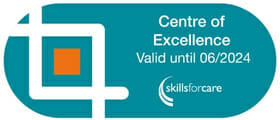Thanks as always to everyone who shared their feedback about last weeks and welcome to our new subscribers. This week I wanted to re-visit some of the themes we talked about in the previous posts:
Competence is more important than attendance
The Care Certificate is not about training
The core principles in all of the posts above is that it does not matter what the learning method is, as long as it facilitates learning! In the new tech-focussed, virtual society, we have come to know thanks to COVID-19, never has that been truer. In particular with video based learning…
We always endeavour to include videos in our learning because they can be a great way to reinforce a principle or a section of learning, but using videos exclusively has some pitfalls.
Play and go away
Learners who are engaged and committed to the learning and development process will no doubt click play and watch every second of each video, but not all learners are created equal.
Ever done the kind of eLearning where you have to click through all of the screens to get to the test at the end and if you get 85% you are good to go? Well videos are similar and we don’t advocate for them either.
The challenge with video based learning is how do you know that the learner is actually watching? You don’t… So you have to build-in knowledge checks throughout in order to check that they have actually watched the content, which means you end up duplicating effort.
When we started Grey Matter Learning in 2006 we shared some research that is just as relevant today as it was back in 2006. The first of which is Hermann Ebbinghaus and the forgetting curve (below). Essentially what the research shows is that without refreshers, reminders or a blended approach that incorporates multiple learning methods it only takes 6 days to forget 90% of what you saw.
How much can you remember when you have been on course? You remember that one thing that you thought was interesting – the 10%!
The other piece of research we shared was published by renowned scholar of human memory Henry Roediger III, of Washington University who found that asking people questions transformed what people remembered.
Robust evidence of competence
One of our customers reached out to us a while back via email that went something like this:
“CQC have told us that eLearning does evidence competence, can you help us to reply”
The answer was of course – YES, because it goes to the heart of what we do and why we do it.
Ultimately if you operate a social care business you don’t need evidence of training (see post: competence is more important than attendance), what you need is evidence for CQC that your staff are safe to practice (regulation 18 and 19).
So your staff can watch all the videos in the world, but if they don’t then apply anything in their day to day role, you don’t have what you need – robust evidence. The only way you can capture that robust evidence is to use a blended approach that incorporates learning, assessments, discussions (supervision / one2one) and observations.
The two pieces of research I mentioned earlier essentially informed the creation of our methodology: Know, Understand and DO.






